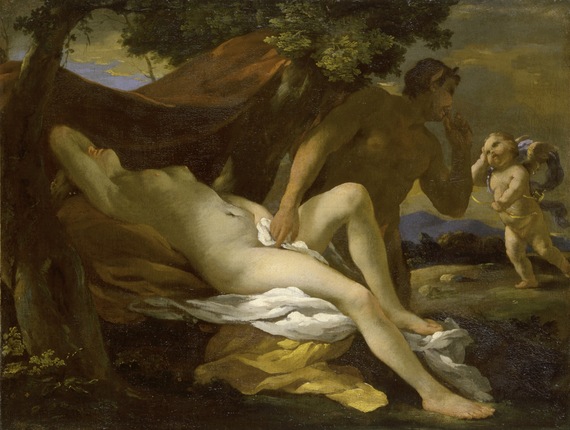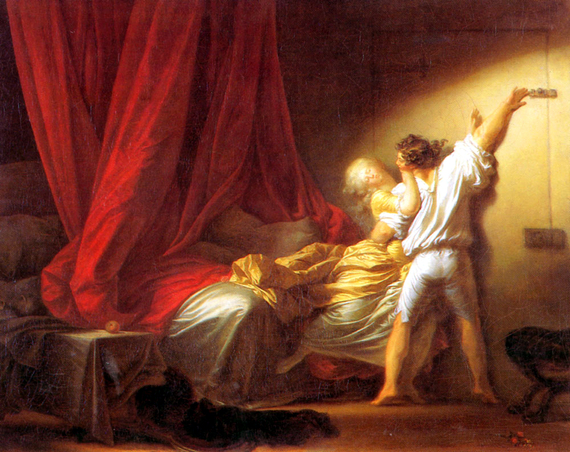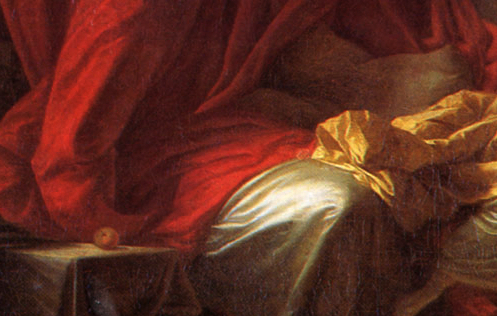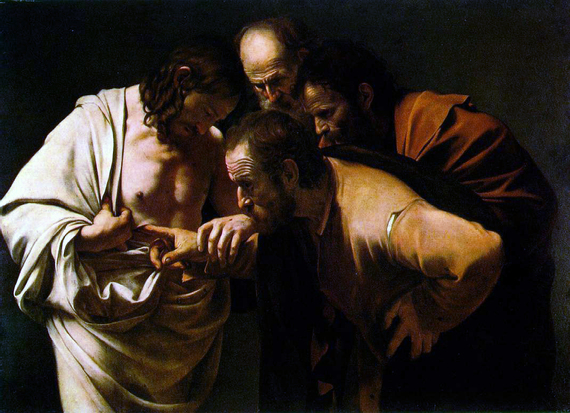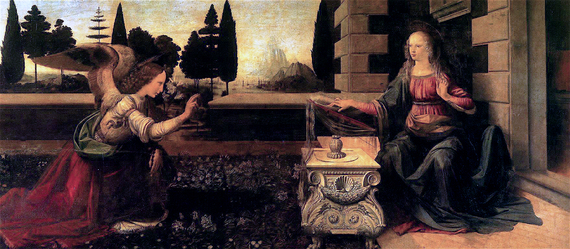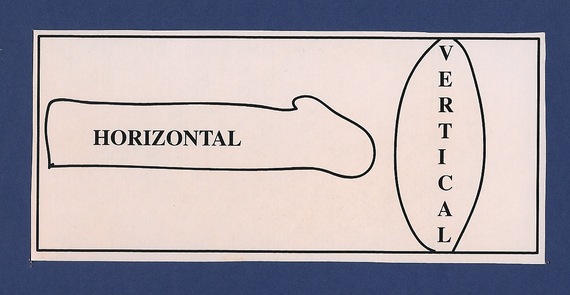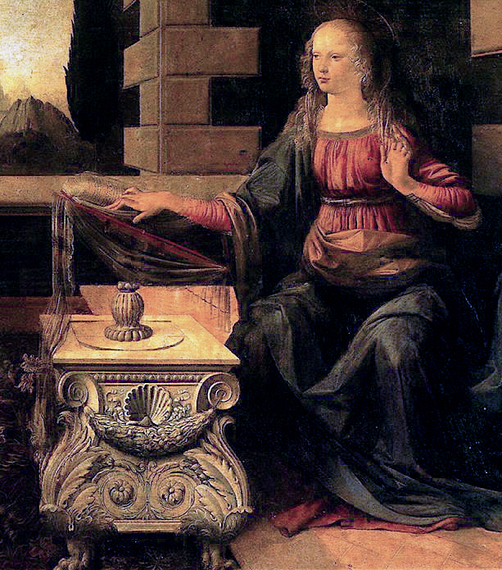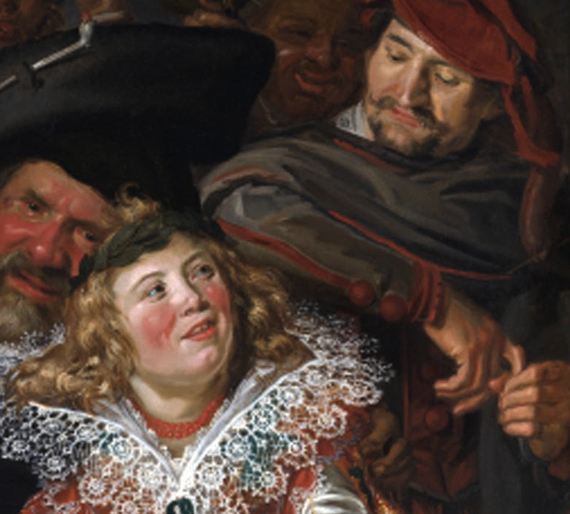With the debut of the cable series Masters of Sex, any purely art historical Google search for risque old master paintings is now totally skewed to the Showtime television program. In an attempt to reposition the discussion to its former elevated status, I will here discuss the compositions of a few paintings wherein great artists of the past buried sexual content deep in the fundament of their works.
An obvious place to start is Fragonard's The Bolt, a seemingly simple scene of seduction. The lovers' gestures are urgent and dramatic, and aim diagonally towards the bolt of the title. Strong light focuses our attention on their actions. The bolt is a knowing visual pun of the activity about to commence. Her body language is a study in psychological conflict; "No! I mean yes! No!" The bed compositionally balances the figures, a third character in the story. Sitting back in the shadow to the left of the painting it doesn't grab our attention as the brightly lit characters do, but its meaning becomes more obvious the more it is studied. The inviting, soft, vaginal folds glow a passionate red, waiting to swallow the sexual combatants whole.
Hidden by Fragonard in the silks and the folds of the sheets and pillows are the forms of a woman being ravaged, her breasts and her sex thrown open. The single fruit on a foreground table is a second visual pun, purposely placed as an ersatz testicle.
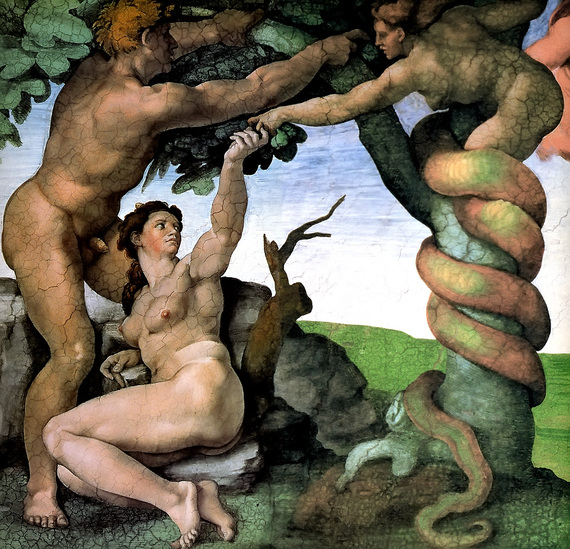
MICHELANGELO BUONARROTI, The Sin of Adam & Eve, 1508-12, fresco, Sistine Chapel ceiling, The Vatican.
Michelangelo hid sex in plain sight sixty-five feet above the Pope, in the Holy Father's own house. The old masters were adept at inserting the religiously forbidden but most natural and basic of human acts into depictions of holy scripture. On the ceiling of the Sistine Chapel Michelangelo depicted Eve momentarily interrupted in the first ever apple-bobbing contest as the female serpent hands her a fig. Original sin indeed, viewed enthusiastically by five million oblivious Vatican visitors annually.
What can you say about a group of men watching the insertion of a digit into a wound that never heals? Caravaggio was a clever but crude fellow who could wield a brush like an angel sings. Do you really think this painting street brawler didn't know what his content was up to when he left four guys in bathrobes alone in his dark studio? C'mon, this is the same artist who early on painted a supremely lascivious John the Baptist embracing a horned sheep, and a grinning pre-pubescent Cupid proudly flashing the viewer amid the discarded cultural attributes of Western civilization.
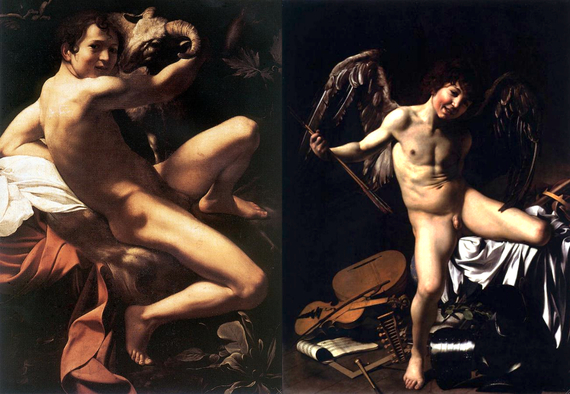
CARAVAGGIO, John the Baptist, 1602, oil on canvas, Musei Capitolini, Rome.
CARAVAGGIO, Amor Victorious, 1602, oil on canvas, Gemaeldegalerie, Berlin.
Leonardo Da Vinci's painting of the angel Gabriel announcing the impregnation of the Virgin Mary by God is perhaps the greatest abstract presentation of divine sex ever created. If there is one image that perfectly demonstrates to my students what is meant by abstract psychological elements in a composition, it is Da Vinci's Annunciation.
There are hundreds of Annunciation paintings in Christian art, and they often have the Virgin in a house, commonly seen as a symbol of a woman's space. An angel then 'announces' her pregnancy through an open door, or a shaft of light from God strikes the reluctant Mary. Da Vinci has the Virgin tucked within a series of verticals that form the building, while the angel is aligned with the long horizontal of a low wall. His gesture is angled forcefully forward, while hers is one of surprised receptivity.
The formal elements tell the story. This Annunciation is a monumental depiction of sex on God's level, horizontal meets vertical, penis and vagina reduced to their purest abstract forms. Da Vinci's genius lies in the utter simplicity of his bold design.
The head of the god-sized phallus is formed by the bookstand and the top of the desk, and aims directly at Mary's womb. It is interesting to note that the desk placed before Mary functions, in an abstract sense, as a sign of her virginity, her hymen. Try removing it and she appears exposed and much more available. The bas-relief symbols on the side of the desk hint at female reproductive anatomy, purity, and fecundity.
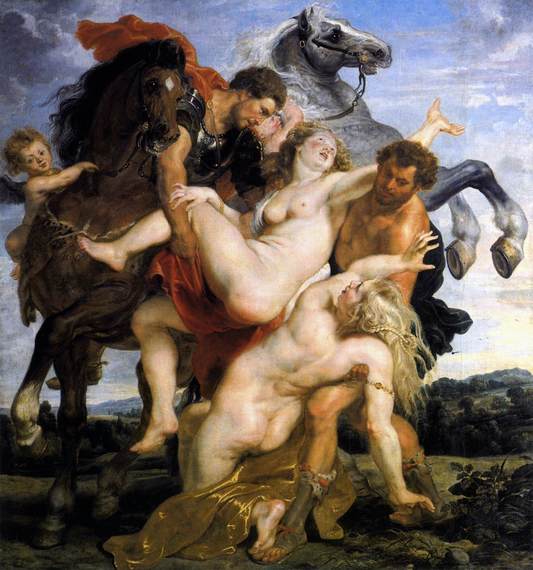
PETER PAUL RUBENS, The Rape of the Daughters of Leucippus, 1617, oil on canvas, Alte Pinakothek, Munich.
Rubens depicts Castor and Pollux abducting (read raping) the daughters of King Leucippus, whom they will later graciously marry. As a young art student in Vienna, I was mesmerized by the space between the two women's bodies. It was an area of great tension, more than could be accounted for by the active outline of their bodies. Rubens framed the action in an invisible circle roughly filling the canvas. Two hidden circles of the same size, one descending from the upper left, the other rising from the lower right, collide like giant wheels grinding against one another. This grinding effect is achieved through the flow in direction of the women's bodies. The tension this creates presents an underlying compositional metaphor for the rape, but Rubens cancels some of its effectiveness by characterizing the men as solicitous, and one of the women in ecstasy. Perhaps this was in deference to their future marriage, or a nod to the mores of the day, but to modern eyes the disconnect between the act and the characters' motives is stark.

FRANS HALS, Shrovetide Revelers, 1615, oil on canvas, Metropolitan Museum of Art, New York.
In this piece Dutch master Frans Hals paints carnival celebrants before Lent. Carnival, or Shrovetide, is a festival sanctioned by the church and society that precedes a period of fasting and penitence. It is a time for the masses to blow off steam, to mock the authorities that rule their lives on all the other days of the year. This is achieved by dressing up as holy men, nobles, or in the clothing of the opposite sex. Comedic scenes are acted out, great quantities of alcohol and rich foods are consumed, and the people generally behave in a fashion that would embarrass them in their everyday lives. Hals depicts these revelers at a table loaded with party food and hearty ale.
A red-faced drunken 'nobleman' wears a sash of sausages, a young 'lass' who appears male flirts with a man to the right making obscene gestures with his hands. The trusty triangle is employed here in a subversive manner. The religious figure that in Christian art commonly commands the center of a triangle is replaced here with a cross-dressing non-virgin whose very gesture recalls a benediction. Hals cleverly turns the propaganda of the church on its head. With this witty invention the underlying form of his composition follows the purpose of carnival perfectly.
The old masters were Masters of Sex centuries before the television series' producers were conceived. Their tricks of the trade still have the ability to shock us, juxtaposing as they do human desires that remain religiously and societally forbidden, with the sudden joy of discovering that source of our greatest pleasure surreptitiously placed before unsuspecting eyes. Art history sizzles!

